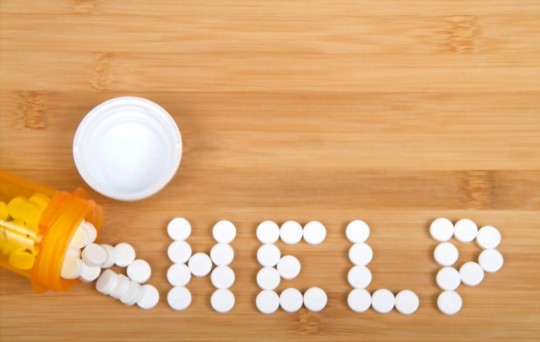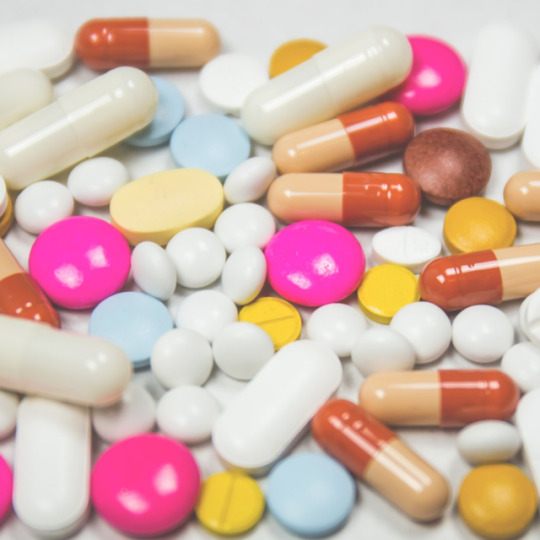#opioidaddiction
Text
Washington D.C. Takes Action to Fight Opioid Addiction and Save Lives
#OpioidAbatementCommission #opioidaddiction #overdosedeaths #treatmentandrecoveryservices #WashingtonD.C.
#Politics#OpioidAbatementCommission#opioidaddiction#overdosedeaths#treatmentandrecoveryservices#WashingtonD.C.
0 notes
Text
Understanding Opioid Withdrawal Syndrome: A Complete Overview

Opioids are a type of drugs that are commonly prescribed to treat pain. Opioids contain both opiates and synthetic opioids like oxycodone, hydrocodone, and methadone, which have identical effects. When the usage of opiate drugs is stopped, it may build various withdrawal symptoms and collectively these symptoms are known as opioid withdrawal syndrome (OWS).
The surge in opioid addiction cases and the involvement of both governmental and private institutions propel the market growth. The general population currently experiences a wide spectrum of severe and chronic ailments, such as cardiovascular, neuropathic, and other conditions. In addition, according to a research report by Astute Analytica, the global Opioid Withdrawal Syndrome (OWS) Market is likely to increase at a compound annual growth rate (CAGR) of 10.4% over the projection period from 2022 to 2030.
Treatment for opioid withdrawal syndrome and home remedies:
Most people should seek a doctor's assistance to stop using opioids because it can be challenging to do so safely. They do some things:
Give the patient medications like buprenorphine or methadone that can help with symptoms and cravings. Their doctor will gradually reduce the dosage until they no longer require it.
Give the drugs to settle the stomach if a person experiences nausea or diarrhea, and advise them to drink more liquids to make up for the water their body is losing.
Give the medicines to manage the blood pressure if it's high.
Methods for controlling opioid withdrawal:
Yoga, meditation, and other mind-body practices can help people manage their pain while they're going through opioid withdrawal.
By drinking enough water, a person can avoid becoming dehydrated. This might happen when they're going through opioid withdrawal, especially if they feel unwell, vomit, or perspire.
Asking for assistance is crucial. Inform their close friends and coworkers that people may need more assistance if they are experiencing opioid withdrawal.
Medicines used to control the opioid withdrawal syndrome:
Some medicines may help control the opioid withdrawal syndromes and enhance the person's comfort during the process. These consist of:
Diazepam: It lowers the feelings of anxiety and irritability.
Clonidine: It treats symptoms such as irritability, sweating, fast heartbeat, and high blood pressure
Metoclopramide: It assists in controlling the vomiting or nausea.
How long does opioid withdrawal syndrome have an impact?
The kind, dose, and duration of the opioid taken, as well as how long a person has been using it, will all affect when and how long a person's withdrawal symptoms from the opioid start.
For instance, a person may suffer withdrawal symptoms 6 to 12 hours after taking their last dose if a person taking prescription opioids that are quick-acting, like oxycodone, or if they're using the narcotic heroin. After two days, the symptoms often peak and then subside after a week or so.
A person may experience withdrawal symptoms one or two days after taking their final dosage of methadone or another opioid that releases slowly in their body. The symptoms can linger for three to six weeks, but they are typically not as severe as those caused by fast-acting opioids.
Content Source:
Understanding Opioid Withdrawal Syndrome: A Complete Overview
Recently Published Blogs:
Dermatoscope: A Crucial Tool for Assessing Skin Lesions
Everything About Wearable Electrocardiography (ECG) Devices
The Best Spectacle Lens Manufactures in the World
The Impact of Digital Therapeutics on Day-to-Day Life
#OpioidWithdrawal#OpioidAddiction#SubstanceAbuse#Recovery#AddictionTreatment#WithdrawalSymptoms#OpioidCrisis#Rehabilitation#MentalHealth#PhysicalHealth#DrugDependency#OpioidRecovery#MedicalTreatment#WithdrawalManagement#HealthcareSupport#OpioidWithdrawalSyndrome(OWS)Market
0 notes
Text
addiction (2023)
Maybe I thought I loved you because I wanted to love myself
Anxiously attaching and not attending to my mental health
It was easier to fall into this pit of fantastical despair
And to preserve myself as my outer self was too much to bear
Come here; let me bring you inside of me
And let’s escape to wherever we can be free
I hope you don’t see how much I’m hurting
And how many parts of myself I’m ready to start killing
It’s just that these feelings have finally made life bearable
Even though I know that this cannot be sustainable
Is my love for you honest and not an illusion?
Although I know that whatever we are is just a foundationless delusion
I’ll push you out, but when we emerge, would we even work?
Could we really translate our fantasies into a realistic story arc?
Or will you be done with me as I inevitably deal with my life’s integration?
Reverting to the voided potentiality I used for my own predation.
- Rose the artist formerly known as she her Pri
~ গোলাপ্রী
#poem#poetry#spilledink#addiction#anxiousattachment#fantasy#codependency#dissociation#substanceabuse#recovery#addictionawareness#opioidaddiction#opioidepidemic#rosetheartistformerlyknownassheherpri#golapri#healing#harm#heartbreak#prose#trauma#wrote this on friday and then edited it#might illustrate this later#it started out as a love poem then warped into chasing substances/entities to fill a void within oneself#abuse
0 notes
Text
How Addiction Blogger is Experiencing Stigma from the Addiction Niche While Trying to Build a Supportive Community
The Power of Community: How Addiction Niche Fails to Support the Newcomer
Addiction is a complex and often misunderstood issue that affects millions of people around the world. For years, those of us struggling with addiction have faced stigma and discrimination, making it even more difficult to seek help and support. However, in recent years, people seem to believe that the stigma surrounding…

View On WordPress
0 notes
Text
Transforming Lives through Cutting-Edge Opiate Addiction Treatment at Cooperative Recovery

In this blog, we discuss the innovative and transformative opiate addiction treatment options offered by Cooperative Recovery, focusing on the latest trends and approaches in the field. The keyword here is opiate addiction treatment, which refers to the comprehensive and evidence-based methods employed by Cooperative Recovery to help clients overcome addiction and achieve lasting recovery. We explore the incorporation of Medication-Assisted Treatment (MAT), holistic treatment methods, personalized treatment plans, and trauma-informed care as part of the center's commitment to providing the most effective and compassionate care. Additionally, we emphasize the importance of family involvement and support throughout the recovery journey. By staying at the forefront of addiction treatment and addressing the unique needs of each client, Cooperative Recovery is transforming lives and helping individuals build a brighter, healthier future.
0 notes
Text
Need a Suboxone Doctor? Find One Near You Accepting New Patients Today!
If you or a loved one is struggling with opioid addiction, Suboxone treatment can be an effective option for recovery. However, finding a Suboxone doctor can be a daunting task, especially if you're looking for one that's accepting new patients. Fortunately, there are Suboxone doctors near you accepting new patients, and NuLease Medical Solutions is here to help.
At NuLease Medical Solutions, we have a team of Suboxone doctors near you accepting new patients. Our experienced doctors will assess your individual needs and develop a personalized treatment plan that's tailored to your unique situation. Our doctors are dedicated to providing compassionate care and support throughout your recovery journey.
In addition to our experienced doctors, we offer a range of services to support your recovery, including individual and group therapy, relapse prevention strategies, and ongoing support. We understand that addiction is a complex disease, and we are committed to helping you achieve long-term recovery and a better quality of life.
If you're looking for Suboxone doctors near you accepting new patients, look no further than NuLease Medical Solutions. Contact us today to schedule a consultation and start your journey to recovery.
0 notes
Photo

Rainbow Fentanyl A Parents Worst Nightmare
0 notes
Text
"The Opioid Dilemma: Challenges and Innovations in Pain Management!"
Opioids, once hailed as powerful pain relievers, are now at the center of a global health crisis. While essential for managing severe pain, their highly addictive nature has led to widespread misuse and a staggering rise in overdose deaths. Today, the conversation around opioids is shifting toward safer prescribing practices, alternative therapies, and harm-reduction strategies. As medical professionals and governments work to curb the epidemic, awareness and education are critical in navigating the fine line between effective pain management and public health concerns.
#OpioidCrisis #PainManagement #OpioidAddiction #PublicHealthCrisis #SafePrescribing #HarmReduction #OpioidAwareness #AddictionRecovery #AlternativeTherapies #OpioidEpidemic #HealthcareCrisis #SubstanceAbuse #OverdosePrevention #MentalHealthMatters #PrescriptionSafety #ChronicPainSolutions #AddictionAwareness #OpioidMisuse #RecoveryJourney #HealthTechInnovations #CrisisIntervention
0 notes
Link
The 2024 Hope in the Hills' annual "Healing Appalachia" a three-day benefit concert will return to Lewisburg's State Fairgrounds in West Virginia September 19-21. Proceeds will fund addiction prevention, recovery and wellness programs around Appalachia and beyond
#Janet Walker#Haute-Lifestyle.com#The-Entertainment-Zone.com#Healing Appalachia#opioid#opioid crisis#opioid overdose#health and wellness#medical#support#hope#concert
1 note
·
View note
Text
Washington D.C. Takes Action to Fight Opioid Addiction and Save Lives
#OpioidAbatementCommission #opioidaddiction #overdosedeaths #treatmentandrecoveryservices #WashingtonD.C.
#Politics#OpioidAbatementCommission#opioidaddiction#overdosedeaths#treatmentandrecoveryservices#WashingtonD.C.
0 notes
Text
Alternative Therapies for Chronic Pain Relief
I just watched Painkiller on Netflix. A powerful story about the exploitation of opioids by Purdue Pharmaceuticals and the damage done to thousands of people. Just a reminder there are many alternatives to opioids. #Opioids #OpioidEpidemic #OpioidAddiction #alternativpainrelief #ChronicPainRelief #chronicpainawareness
0 notes
Photo

What is International Overdose Awareness Day? International Overdose Awareness Day (IOAD) is a global event held on August 31st each year and aims to raise awareness of overdose and reduce the stigma of a drug-related death. It also acknowledges the grief felt by families and friends remembering those who have met with death or permanent injury as a result of drug overdose International Overdose Awareness Day is observed on 31 August. It is a time to remember people lost and an opportunity to take action to end overdose. Here are stories from people who have lost a loved one due to overdose, published in "The Bulletin" from The Penington Institute. #IOAD2021 #OverdoseAware #EndOverdose #overdoseprevention #addiction #drugaddiction #drugoverdose #drugs #opioidaddiction #overdose #recovery #drugoverdoseawarenes #drugoverdosen #drugoverdosepreventioneducation #drugoverdoseawareness💉💊 #drugoverdosedeath #drugoverdoseweekend #drugoverdosewareness #drugoverdoseeffect #drugoverdoseepidemic #drugoverdoseawareness #drugoverdosedeaths #drugoverdosesoveramericanfallenheroes #drugoverdoseawarenessday #drugoverdoseaddiction #drugoverdoseday #drugoverdoses #drugoverdoseprevention #drugoverdoseswareness #mccounselling (at MC Counselling) https://www.instagram.com/p/CTN3ShVh9Qe/?utm_medium=tumblr
#ioad2021#overdoseaware#endoverdose#overdoseprevention#addiction#drugaddiction#drugoverdose#drugs#opioidaddiction#overdose#recovery#drugoverdoseawarenes#drugoverdosen#drugoverdosepreventioneducation#drugoverdoseawareness💉💊#drugoverdosedeath#drugoverdoseweekend#drugoverdosewareness#drugoverdoseeffect#drugoverdoseepidemic#drugoverdoseawareness#drugoverdosedeaths#drugoverdosesoveramericanfallenheroes#drugoverdoseawarenessday#drugoverdoseaddiction#drugoverdoseday#drugoverdoses#drugoverdoseprevention#drugoverdoseswareness#mccounselling
2 notes
·
View notes
Photo

“ Chronic pain is a major cause of disability worldwide with a prevalence rate of 15% to 30% in the general adult population, and more than 500 billion dollars annual costs in the United States. Unfortunately, multiple reports are showing a lack of satisfactory results with available #pharmacotherapy with less than 70% of patients having pain #relief."
A recent study found that over half of chronic pain patients (53%) reduced or eliminated their #opioids within 8 weeks after adding #CBD-rich #hemp extract to their regimens. Almost all CBD users (94%) reported #quality of #life improvements.
#chronicpain#cbdbenefits#opioidcrisis#painrelief#opioidepidemic#recovery#natural#naturalhealing#life#love#hempcbd#addiction#opioidaddiction#opiodawareness
6 notes
·
View notes
Text
Suboxone Treatment with a Psychiatrist: How it Can Help You Overcome Addiction
Suboxone is an FDA-approved medication used to treat opioid addiction. It is a combination of buprenorphine and naloxone, which work together to reduce withdrawal symptoms and cravings associated with opioid use disorder. Suboxone treatment is often used as part of a comprehensive treatment plan that includes counseling and behavioral therapies.
A Suboxone treatment psychiatrist is a medical professional who specializes in treating patients with opioid addiction using Suboxone. They work closely with patients to develop personalized treatment plans that address their unique needs and goals. This includes determining the appropriate dosage of Suboxone and monitoring patients for any side effects or potential drug interactions.
At Cooperative Recovery, we have a team of experienced Suboxone treatment psychiatrists who are dedicated to helping patients overcome opioid addiction. Our comprehensive treatment approach includes individual and group therapy, counseling, and other evidence-based treatments to help patients achieve lasting recovery.
If you or someone you love is struggling with opioid addiction, don't wait to seek help. Contact Cooperative Recovery or a qualified Suboxone treatment psychiatrist today to learn more about how Suboxone treatment can help you overcome addiction and achieve a healthier, happier life.
1 note
·
View note
Text
Everything You Should Know About Suboxone Treatment

Have you or a loved one ever struggled with opioid addiction? It might be difficult to handle some situations, but it is true that there are numerous clinics that are open whenever someone needs them to get better. In a similar vein, a suboxone clinic can help people get better and be the best versions of themselves. People can rest assured that they will be healthy and able to start a new life once they return to their regular lives, thanks to the many advantages that come with the suboxone treatment. Suboxone treatment can be beneficial for these people, but it is only recommended that they begin this treatment under the supervision of a professional like Suboxone Clinic Louisville, KY. So, if you want to learn more about suboxone treatment, go ahead and learn more.
Read more
0 notes
Text
Opioid crisis: How it began and what’s expected to come.
In the 1990s pharmaceutical companies such as Purdue Pharma, famously known for the development and distribution of OxyContin, assured the public that their medication would be a helpful solution to chronic pain with the assurance that it was a low addictive pill. Likewise, other painkiller medication took the form of opioids such as: hydrocodone (Vicodin), hydromorphone, meperidine, and synthetic forms such as fentanyl and tramadol. These companies had claimed that these, “low risk” opioids were beneficial to people who were and weren’t suffering from long term illness, severe post surgery pain and even cancer. However, the results of patients consuming these “pain meds” felt a substantial sense of euphoria to the point of abusing these opioids and sprouting a fatal dependency on them (National Institute of Drug Abuse, 2020).
Not too long ago Netflix had released a a true crime documentary called, The Pharmacist, consisting of four episodes detailing the tragedy of a Louisiana based pharmacist’s son’s murder to then his discovery of opioid addiction amongst his customers and a pill mill doctor who is distributing them. Prior to watching this documentary I had minimal knowledge of the opioid crisis but watching Dan Schneider’s first hand account of the crisis unfolding, had piqued my interest and desire to learn more.
undefined
youtube
The first wave of the opioid crisis occurred in the 1990s and then spiked further later in 2010, with the dependency on heroin itself as a result of prescription opioids becoming more difficult to obtain by medical practitioners,
“By 1999, 86% of patients using opioids were using them for non cancer pain. Communities where opioids were readily available and prescribed liberally were the first places to experience increased opioid use and diversion (the transfer of opioids from the individual for whom they were prescribed to others, which is illegal)”
“Deaths due to heroin-related overdoes increased by 286% from 2002 to 2013, and approximately 80% of heroin users admitted to misusing prescription opioids before turning to heroin” (National Capital Poison Center, History of the Opiod Epidemic)

Currently there are on average 130 Americans dying daily to opioid overdose. The Centers for Disease Control and Prevention has committed to fighting the opioid epedemic and instituted a program called, “Enhanced State Opioid Overdose Surveillance” in order to monitor and support the United States by more effective quality surveillance data regarding fatal and non fatal opioid overdose cases. As of now 32 states are being funded which help provide detailed toxicology information, death scene investigations and other factors.
References
“Enhanced State Opioid Overdose Surveillance.” Centers for Disease Control and Prevention, Centers for Disease Control and Prevention, 16 July 2019, www.cdc.gov/drugoverdose/foa/state-opioid-mm.html.
Liu, Lindsy. “History of the Opioid Epidemic.” History of the Opioid Epidemic: How Did We Get Here?, National Capital Poison Center, 13 Nov. 2019, www.poison.org/articles/opioid-epidemic-history-and-prescribing-patterns-182.
National Institute on Drug Abuse. “Opioid Overdose Crisis.” NIDA, 20 Feb. 2020, www.drugabuse.gov/drugs-abuse/opioids/opioid-overdose-crisis.
1 note
·
View note